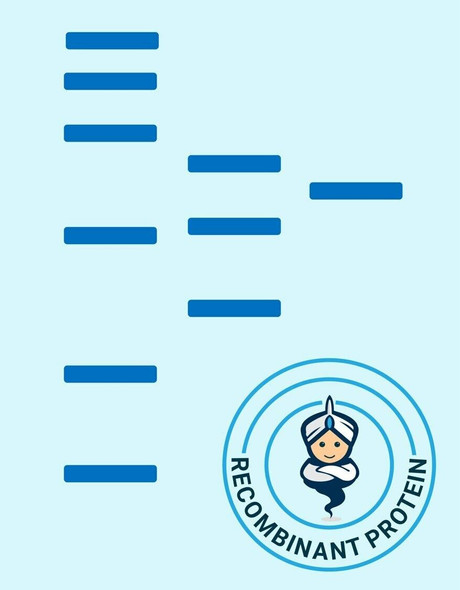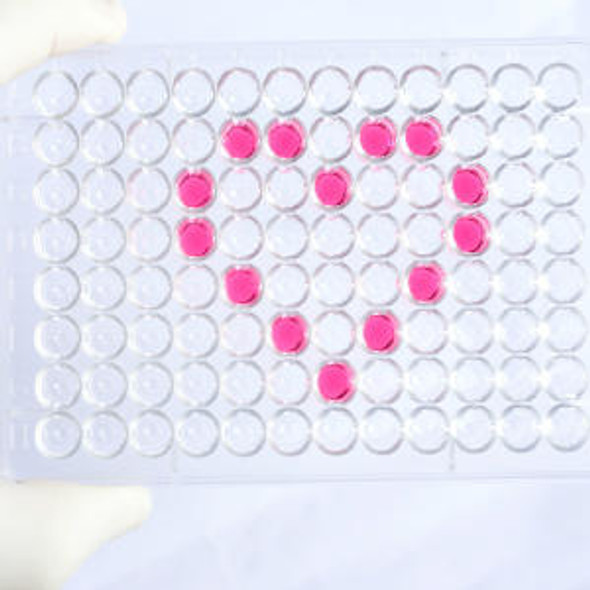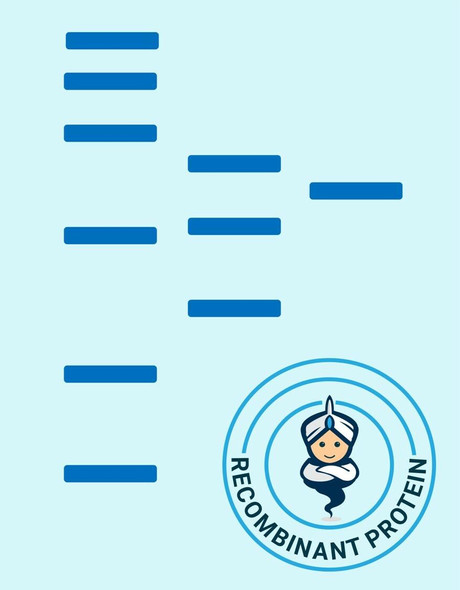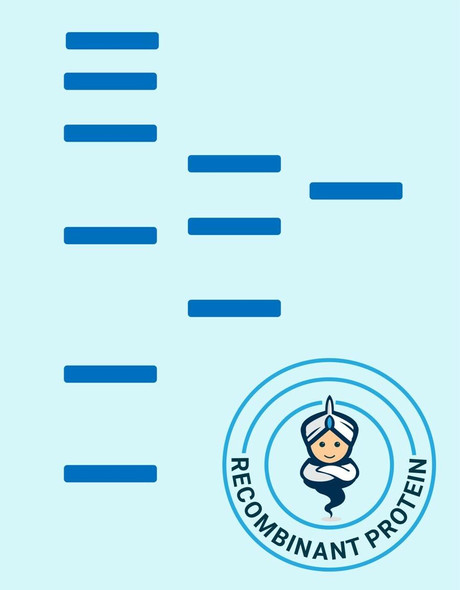Human CSTA Recombinant Protein (RPPB3299)
- SKU:
- RPPB3299
- Product type:
- Recombinant Protein
- Size:
- 20ug
- Species:
- Human
- Target:
- CSTA
- Synonyms:
- Cystatin-A
- Cystatin-AS
- Stefin-A
- CSTA
- Source:
- Escherichia Coli
- Uniprot:
- P01040
Description
| Product Name: | Human CSTA Recombinant Protein |
| Product Code: | RPPB3299 |
| Size: | 20µg |
| Species: | Human |
| Target: | CSTA |
| Synonyms: | Cystatin-A, Cystatin-AS, Stefin-A, CSTA, STF1, STFA. |
| Source: | Escherichia Coli |
| Physical Appearance: | Sterile Filtered clear solution. |
| Formulation: | Cystatin-A (1mg/ml) in 20mM Tris-HCl buffer (pH8.0), 1mM DTT and 10% glycerol. |
| Stability: | Store at 4°C if entire vial will be used within 2-4 weeks. Store, frozen at -20°C for longer periods of time. For long term storage it is recommended to add a carrier protein (0.1% HSA or BSA).Avoid multiple freeze-thaw cycles. |
| Amino Acid Sequence: | MGSSHHHHHH SSGLVPRGSH MIPGGLSEAK PATPEIQEIV DKVKPQLEEK TNETYGKLEA VQYKTQVVAG TNYYIKVRAG DNKYMHLKVF KSLPGQNEDL VLTGYQVDKN KDDELTGF |
Cystatin-A is the intracellular inhibitor of cysteine proteinase cathepsin B (CatB) and belongs to family 1 of the cystatin superfamily of inhibitor proteins. CSTA is a stefin that functions as a cysteine protease inhibitor, forming tight complexes with papain and the cathepsins B, H, and L. It has been proposed that extracellular CatB together with other classes of proteinases are all subjected to a cascade-like manner of activation. CatB and its inhibitor Cystatin-A are involved in degradation of extracellular matrix proteins during tissue remodeling. CSTA is one of the precursor proteins of cornified cell envelope in keratinocytes and plays a role in epidermal development and maintenance. Cystatin-A has been reported to be found in high concentrations in epithelial cells, polymorphonuclear leukocytes and lymphoid tissue. Stefins may be used as prognostic and diagnostic tools for cancer.
CSTA produced in E.Coli is a single, non-glycosylated polypeptide chain containing 118 amino acids (1-98 a.a.) and having a molecular mass of 13.1kDa.CSTA is fused to a 20 amino acid His-tag at N-terminus & purified by proprietary chromatographic techniques.
| UniProt Protein Function: | CSTA: This is an intracellular thiol proteinase inhibitor. Has an important role in desmosome-mediated cell-cell adhesion in the lower levels of the epidermis. Defects in CSTA are the cause of ichthyosis exfoliative autosomal recessive ichthyosis bullosa of Siemens-like (AREI). A form of congenital exfoliative ichthyosis, sharing some features with ichthyosis bullosa of Siemens and annular epidermolytic ichthyosis. AREI presents shortly after birth as dry, scaly skin over most of the body with coarse peeling of non- erythematous skin on the palms and soles, which is exacerbated by excessive moisture and minor trauma. Electron microscopy analysis of skin biopsies, reveals mostly normal-appearing upper layers of the epidermis, but prominent intercellular edema of the basal and suprabasal cell layers with aggregates of tonofilaments in the basal keratinocytes. Belongs to the cystatin family. |
| UniProt Protein Details: | Chromosomal Location of Human Ortholog: 3q21 Cellular Component: cornified envelope; cytoplasm; extracellular space; nucleus Molecular Function:cysteine protease inhibitor activity; protease binding; protein binding, bridging; structural molecule activity Biological Process: cell-cell adhesion; keratinocyte differentiation; negative regulation of peptidase activity; negative regulation of proteolysis; peptide cross-linking Disease: Exfoliative Ichthyosis, Autosomal Recessive, Ichthyosis Bullosa Of Siemens-like |
| NCBI Summary: | The cystatin superfamily encompasses proteins that contain multiple cystatin-like sequences. Some of the members are active cysteine protease inhibitors, while others have lost or perhaps never acquired this inhibitory activity. There are three inhibitory families in the superfamily, including the type 1 cystatins (stefins), type 2 cystatins, and kininogens. This gene encodes a stefin that functions as a cysteine protease inhibitor, forming tight complexes with papain and the cathepsins B, H, and L. The protein is one of the precursor proteins of cornified cell envelope in keratinocytes and plays a role in epidermal development and maintenance. Stefins have been proposed as prognostic and diagnostic tools for cancer. [provided by RefSeq, Jul 2008] |
| UniProt Code: | P01040 |
| NCBI GenInfo Identifier: | 118177 |
| NCBI Gene ID: | 1475 |
| NCBI Accession: | P01040.1 |
| UniProt Secondary Accession: | P01040,Q6IB90, |
| UniProt Related Accession: | P01040 |
| Molecular Weight: | 11,006 Da |
| NCBI Full Name: | Cystatin-A |
| NCBI Synonym Full Names: | cystatin A |
| NCBI Official Symbol: | CSTA |
| NCBI Official Synonym Symbols: | AREI; PSS4; STF1; STFA |
| NCBI Protein Information: | cystatin-A |
| UniProt Protein Name: | Cystatin-A |
| UniProt Synonym Protein Names: | Cystatin-AS; Stefin-A |
| Protein Family: | Cystatin |
| UniProt Gene Name: | CSTA |
| UniProt Entry Name: | CYTA_HUMAN |










